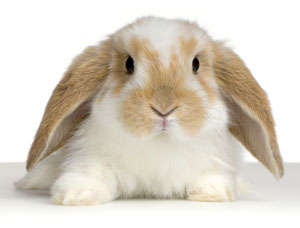The Connection Between Glowing Bunnies and Diabetes Research

A team of Turkish and Hawaiian researchers announced in August that they have genetically engineered rabbits to glow in the dark when the lights go off, according to Nature World News. (You have to assume at least one researcher, upon seeing that the experiment worked, probably uttered the word “cool”.) These aren’t the first glow-in-the-dark creatures created by scientists, as the list includes pigs and mice, but it seems these might be the cutest yet.
The researchers weren’t just making an interesting party trick. Instead, they’re trying to find easier ways to verify that manipulated genes have been passed down from one generation to the next. It’s a way to make transgenic research easier and cheaper, and it has implications for diabetes treatment.
The glow-in-the-dark trick comes thanks to green fluorescent protein (GFP), a substance found in some jellyfish. Since it was first extracted from jellyfish in the sixties, GFP has been used by researchers to light up the inner workings of critters. GFP helps verify gene transfer from one generation to the next and also shines a light on how things operate internally. According to a livescience article, researchers have been able to attach GFP to beta cells in the pancreas and have learned about how the cells are made by watching the process glow before their eyes.
Transgenic research is just starting to get to the point where animals can be genetically tinkered with to produce pharmaceutical compounds for human benefit. Recently, Insulin Nation reported that researchers utilized islet cells from pigs to promote beta cell growth and ward off immune system attack of beta cells in people with Type 1 diabetes (“Four-Legged Islet Factories: the Pigs of Auckland Island”). Any advancement which makes transgenic research easier and more cost-effective is sure to benefit the diabetes community down the road.
Glow-in-the-dark animals may soon be a given when it comes to genetic research. Earlier this year, Uruguayan researchers say they’ve created a flock of glow-in-the-dark-sheep, and the Turkish-Hawaiian team is hard at work creating their own flock.
Glow-in-the-dark sheep. How cool is that?







